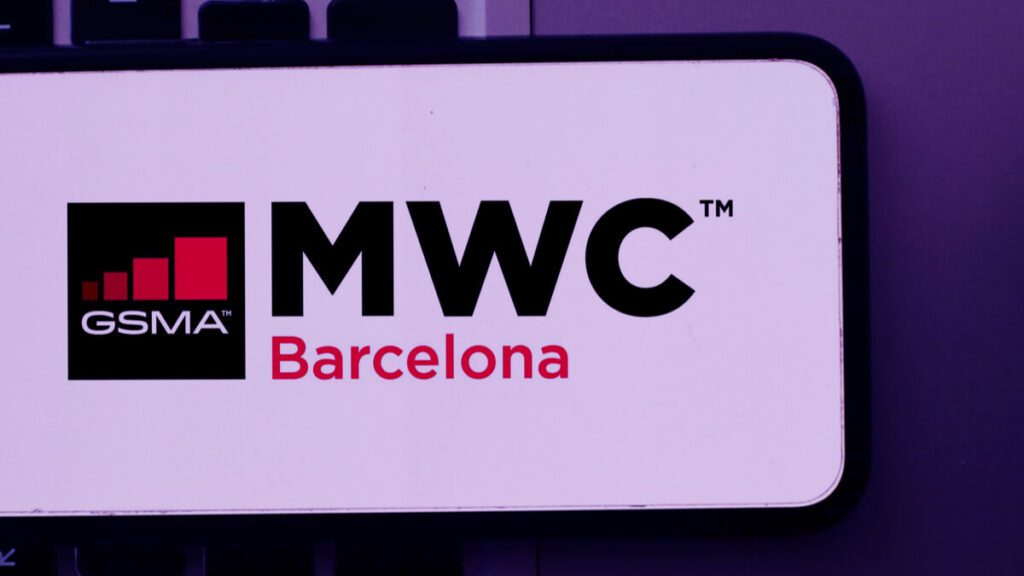Lessons from Mobile World Congress: Seizing digital opportunities

As a highlight of many tech company calendars, Mobile World Congress (MWC) was sorely missed in 2020. Back with an albeit smaller, socially distanced bang in June 2021, MWC still didn’t disappoint. One of the event’s greatest takeaways was that — whether telcos are ready or not — we’re entering a new, digital era. Let’s jump into MWC’s key takeaways, and what they mean for the future of the telecommunications industry.
It wouldn’t be Mobile World Congress if the opening keynote session did not feature a high-profile telecoms executive seeking to reshape the regulatory landscape. This year, chairman and CEO of Telefónica José María Álvarez-Pallete spoke candidly about the digital transformation of telecommunications and the challenges that Europe faces in seizing digital opportunities.
An AI evolution
One of the Telefónica top-dog’s main predictions was that artificial intelligence (AI) will be the major endgame of the digital transformation. Major exhibitors echoed this foresight, with one of Orange’s demonstrations centring on automation, AI and cloud as key enablers to reinvent network operations for increased efficiency and quality of service.
AI could be one way of solving one of the telecommunications industry’s major headaches — customer service. Now more than ever, consumers are noticing the impact of bad customer service.
In fact, the number of complaints about poor service in the last six months was at its highest level since 2009, according to the UK Institute of Customer Service’s survey of 10,000 people. Customer satisfaction levels increase exponentially when good customer service is in place, but how do you improve customer support?
Chatbots use AI to hold real-time conversations with customers, build brand credibility and boost engagement. Even when team members aren’t available, chatbots work around the clock to support online visitors. Several mobile network operators (MNOs) have already adopted chatbot functions, with the likes of EE and O2 both using automated tools to recognise keywords and execute actions based on them.
For instance, if a customer wanted to know more about their upgrade options, the key words “upgrade contract” could trigger the chatbot to commence relevant conversation.
Doing more with data
Simply installing a chatbot function doesn’t mean a telco has done all it can to digitally transform. Taking digital transformation to the next level incorporates another key MWC theme — using data.
“As much as 40 percent of internet traffic is non-human, generated by machines that are talking to each other,” Álvarez-Pallete noted.
While chatbots provide a tool that can improve telecoms customer service, their real driver for success is data. A live, human agent that’s interacting with customers won’t automatically know their needs and why they’re reaching out. To figure out how to help them, agents must put the pieces together from the conversation and use their communications skills to solve problems.
Chatbots lack that human touch but must still provide a similar level of support. Fundamentally, a chatbot turns raw data into a conversation. The two key bits of data it needs to process are what people are saying to it and what it needs to respond.
To uncover that information, the bot uses data from previous interactions, e-mails, telephone transcripts and other insightful documents. This is the training data. However, bots can gather data from other sources too.
A chatbot is only as good as the data it receives. To broaden the bot’s knowledge, telcos can look at getting hold of open-source data, which provides them with a deeper context. For instance, open-source training data can be obtained via the WikiQA Corpus, a publicly available set of question and sentence pairs that uses Bing query logs and links to Wikipedia pages. Elsewhere, Twitter Support offers data from over 3 million tweets and replies from the biggest brands on Twitter.
There are hundreds more examples just like this, which can help AI-programmed telco chatbots to learn more about consumer behaviour patterns and, ultimately, become better equipped to answer customer queries.
Get ready for the future
Reflecting on this year’s MWC, it’s clear to see the telecommunications industry is on the brink of a digital shift. However, change doesn’t come without its limitations.
Speaking of the obstacles that telcos face when looking to digitalise, Álvarez-Pallete warned that “governments need to attract investment in the smart digital infrastructure that will make all that possible.” He added that Europe needs a sustainable telecoms sector, otherwise it will lag behind in the global race for digital leadership.
At Mobilise, we can’t help but agree. Technology is at a telco’s fingertips, but the industry needs experts that can drive digitalisation forwards, in a way that is progressive and sustainable.
Our M-Connect digital platform, for example, provides the software elements needed for digital-first propositions. With a fully customisable architecture, M-Connect allows telcos to overcome hurdles to digitalisation in a single piece of software.
Users can reduce customer service costs by at least ten per cent through AI and chatbot support, enrich user behaviour with advanced data analytics and improve customer satisfaction by creating personalised user experiences.
If we can take one thing away from this year’s MWC, it’s that the future is digital. Telecommunications is evolving rapidly, but there are still many factors that businesses should bear in mind if they’re to keep up with their customers’ purchasing habits. Knowing change is coming is one thing, but telcos need to make sure they are ready for it.
